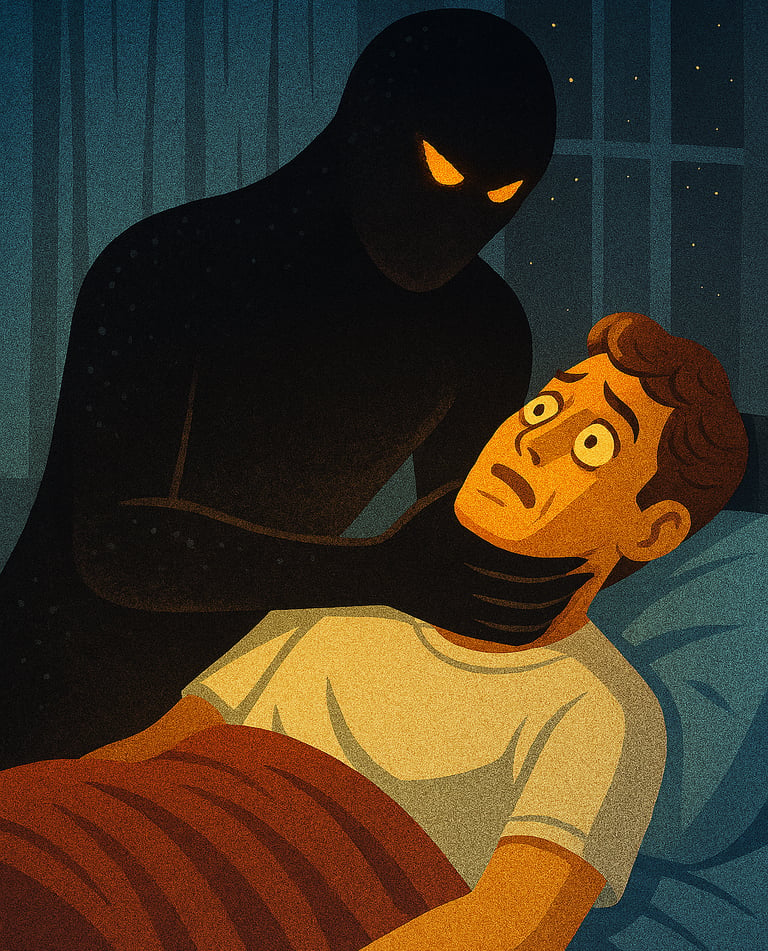Sleep paralysis
Definition, causes, contributing factors and solution
Ikechukwu Nwanze
7/8/20252 min read
What is sleep paralysis?
Sleep paralysis is generally defined as the inability to move or speak while falling asleep or waking up. It is a temporary state of helplessness in which the affected person remains conscious but unable to act. This condition is a form of temporary paralysis consciously experienced during the transition between sleep and wakefulness, and its duration can vary.
Common characteristics of sleep paralysis include a sense of danger, the perception of an intruder in the room, feelings of suffocation, and a sensation of separation from the body. The experience can be frightening and stressful, often leaving the affected person anxious and questioning its cause.
What causes sleep paralysis?
Sleep paralysis is triggered and sustained by negative emotions such as terror, dread, fright, panic, alarm, apprehension, horror, trepidation, consternation, phobia, worry, nervousness, unease, agitation, distress, tension, restlessness, edginess, and foreboding. These emotions arise from a person’s inner being - in other words, the afflicted individual carries them within.
If such emotions are continually nourished, they can receive reinforcement from others who share the same state of mind. Over time, they may take on forms that those affected describe as demons, intruders, shadows, dark figures, entities, phantoms, the “old hag,” pandafeche, mære (mare), kanashibari, pisadeira, karabasan, alp, night hag, dab tsog, and other culturally specific manifestations.
These forms originate within the afflicted person, are sustained, and receive reinforcement from other individuals with a similar state of mind. They are not independent - having no life of their own - but are entirely dependent on the intuition of their host. The condition of the host’s intuition either attracts or repels these forms, and this attraction or repulsion is governed by a natural law known as the Law of Homogeneity (“like attracts like”).
Negative emotions consistently attract these forms, which themselves are generated by negative emotions. Ultimately, these reinforced forms return to all parties with similar mindsets - those who have continually sustained them - through the operation of the Law of Homogeneity.
What factors trigger these negative emotions?
These include, but are not limited to, the following: fear of losing a possession, unrealistic expectations, past trauma, information overload, perceived danger or threat, stressful life events, and financial pressure.
Solution to sleep paralysis.
Negative emotions are the cause of sleep paralysis; therefore, the antithesis would be positive emotions. Such positive emotions include courage, bravery, confidence, calmness, security, assurance, boldness, peace, serenity, relaxation, composure, tranquillity, and contentment.
Anyone who experiences sleep paralysis should cultivate the habit of practicing these positive emotional states of mind in daily life. Over time, these qualities will become part of their nature and ultimately attract reinforcement from others with similar intuition.
This article is based on the knowledge contained in the spiritual work entitled: 'In The Light of Truth: The Grail Message' by Abd-ru-shin.

